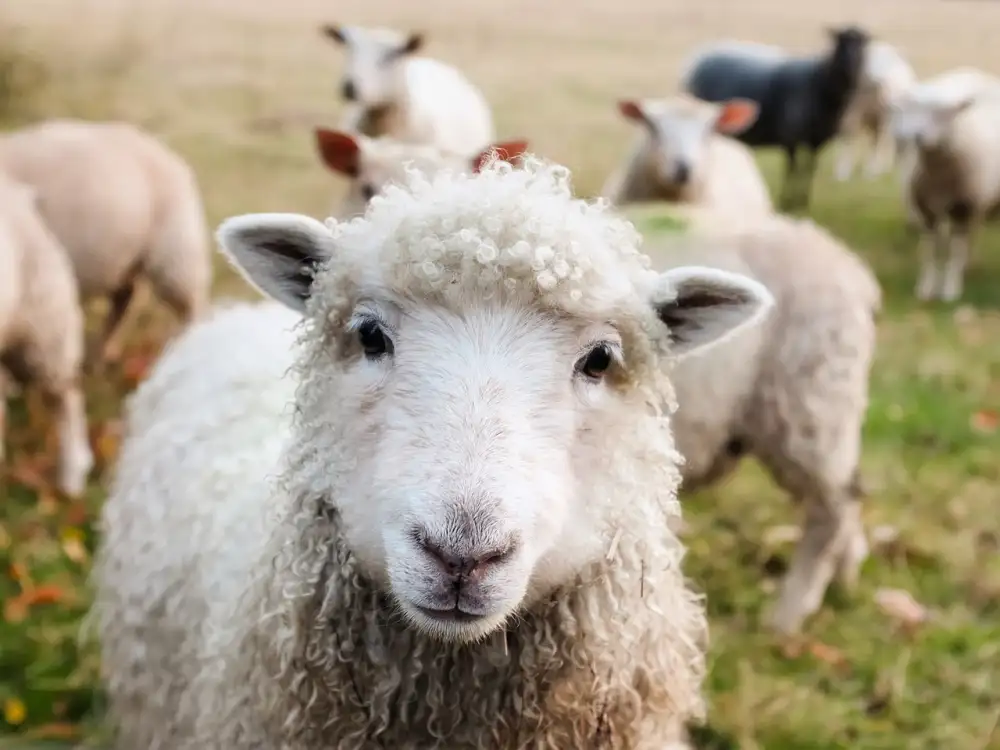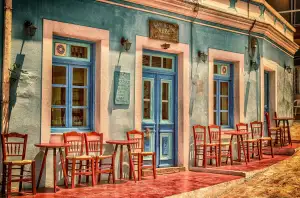Master the Art of Slow Cooking Lamb: A Mouthwatering Guide to Tender Delights

Slow cooking is a culinary technique that has been used for centuries to transform tough cuts of meat into tender, flavorful delights. And when it comes to lamb, slow cooking is the perfect way to bring out its natural richness and succulence. Whether you're hosting a dinner party or simply craving a comforting meal, mastering the art of slow cooking lamb will elevate your culinary skills to new heights. In this guide, we will take you through the step-by-step process of creating mouthwatering slow cooked lamb dishes that will delight your senses and leave you craving for more. So get ready to embark on a culinary journey that will have you savoring every tender bite of slow cooked lamb.
Choosing the Right Cut of Lamb for Slow Cooking
Choosing the right cut of lamb is crucial for achieving tender and flavorful results when slow cooking. Opt for cuts that are well-suited to long, slow cooking methods, such as shoulder, shanks, or leg of lamb. These cuts have more connective tissue and marbling, which will break down during the slow cooking process, resulting in succulent and melt-in-your-mouth meat. Avoid leaner cuts like loin or rack, as they may become dry and tough when cooked slowly. Remember, the quality of the lamb also matters, so choose fresh and high-quality cuts for the best results.
Preparing the Lamb for Slow Cooking
Before you begin slow cooking your lamb, it's important to properly prepare the meat. Start by trimming any excess fat from the lamb, as too much fat can make the dish greasy. However, be sure to leave a thin layer of fat on top to keep the meat moist and flavorful during the long cooking process.
Next, season the lamb with salt and pepper to enhance its natural flavors. You can also add herbs and spices such as rosemary, thyme, garlic, or paprika for extra depth of flavor. Rub these seasonings all over the lamb, ensuring that every inch is coated evenly.
For added richness and tenderness, consider marinating the lamb overnight in a mixture of olive oil, lemon juice, and your choice of herbs and spices. This will infuse the meat with incredible flavors and help break down its fibers for a melt-in-your-mouth texture.
Once you have prepared the lamb, cover it tightly with plastic wrap or place it in a resealable bag before refrigerating. This will allow the flavors to penetrate deep into the meat while keeping it fresh until you're ready to start slow cooking.
By taking these steps to prepare your lamb before slow cooking, you'll ensure that each bite is succulent and bursting with flavor.
Seasoning and Flavoring the Lamb
Seasoning and flavoring the lamb is a crucial step in creating a mouthwatering slow-cooked dish. The right combination of herbs, spices, and marinades can elevate the flavors to new heights. Start by generously seasoning the lamb with salt and pepper to enhance its natural taste. Then, experiment with different herbs like rosemary, thyme, or oregano to add depth and aroma. For an exotic twist, try using spices such as cumin, coriander, or paprika. To infuse even more flavor, marinate the lamb overnight in a mixture of olive oil, garlic, lemon juice, and your choice of herbs and spices. This will tenderize the meat while imparting a delightful tanginess. Remember to adjust the seasoning according to your personal preference and desired flavor profile. With the right seasoning and flavoring techniques, your slow-cooked lamb will become an irresistible culinary masterpiece.
Slow Cooking Techniques for Lamb
Slow cooking is a gentle and patient process that allows the lamb to become tender and succulent. There are several techniques you can use to achieve this mouthwatering result.
One popular technique is braising, which involves searing the lamb in a hot pan before transferring it to a slow cooker or oven. This helps to lock in the flavors and juices, resulting in a rich and flavorful dish.
Another technique is stewing, where the lamb is cut into smaller pieces and cooked slowly in a liquid such as broth or wine. This method allows the flavors to meld together and creates a hearty and comforting meal.
For those who prefer a more hands-off approach, using a slow cooker or crockpot is ideal. Simply place the seasoned lamb into the slow cooker along with any desired vegetables or aromatics, set the temperature to low or medium, and let it cook for several hours until it reaches the desired tenderness.
If you're looking for a more intense flavor profile, consider marinating the lamb overnight before slow cooking. This allows the marinade to penetrate the meat, infusing it with delicious flavors.
Regardless of which technique you choose, be sure to cook the lamb on low heat for an extended period of time. This slow and steady cooking process breaks down tough connective tissues, resulting in melt-in-your-mouth tender meat.
Experiment with different techniques to find your preferred method of slow cooking lamb. Whether it's braising, stewing, or using a slow cooker, each technique will yield its own unique flavors and textures. So take your time, savor the process, and enjoy the incredible results that come from mastering the art of slow cooking lamb.
Monitoring and Adjusting the Cooking Process
Monitoring and adjusting the cooking process is crucial to ensure that your slow cooked lamb turns out perfectly tender and flavorful. Throughout the cooking time, it's important to regularly check on the lamb to make any necessary adjustments.
Firstly, keep an eye on the temperature of your slow cooker or oven. Slow cooking requires low heat, so ensure that the temperature remains steady and doesn't exceed the recommended range for your recipe. Use a reliable meat thermometer to monitor the internal temperature of the lamb as well.
If you notice that the lamb is cooking too quickly or becoming dry, you can lower the heat slightly or add some liquid to the cooking vessel. This will help to maintain moisture and prevent overcooking.
On the other hand, if you find that the lamb is not cooking as quickly as expected, you may need to increase the heat slightly or extend the cooking time. Remember that slow cooking is a gentle process, but if it's taking significantly longer than anticipated, adjustments may be necessary.
Additionally, periodically check on the level of liquid in your slow cooker or roasting pan. If it appears to be drying out, add more liquid such as broth or wine to keep the lamb moist and succulent.
Lastly, taste and adjust the seasoning as needed during the cooking process. Slow cooking allows flavors to meld together beautifully, but sometimes additional salt, herbs, or spices may be required for a more balanced taste.
By monitoring and adjusting these factors throughout the cooking process, you'll be able to achieve a perfectly cooked and deliciously tender slow cooked lamb dish that will delight your senses.
Resting and Serving the Slow Cooked Lamb
Once the lamb is cooked to perfection, it is crucial to allow it to rest before serving. This step allows the juices to redistribute throughout the meat, resulting in a tender and succulent dish. Remove the lamb from the slow cooker and place it on a cutting board. Tent it loosely with aluminum foil and let it rest for about 15-20 minutes.
During this resting period, you can prepare any accompanying side dishes or sauces to complement the flavors of the lamb. The aroma wafting through your kitchen will surely whet your appetite.
After resting, carve the lamb into thin slices against the grain. This ensures maximum tenderness and enhances the eating experience. Serve it on a warm platter, garnished with fresh herbs like rosemary or mint for an added burst of flavor.
Pair your slow-cooked lamb with roasted vegetables, creamy mashed potatoes, or a light salad for a well-rounded meal. Don't forget to pour some of those delicious cooking juices over the sliced lamb for extra moisture and flavor.
Remember that slow-cooked lamb is best enjoyed when served immediately after resting. The tender texture and rich flavors will leave your guests craving for more. So gather around the table, savor each bite, and indulge in the mouthwatering delights of slow-cooked lamb.
Tips and Variations for Slow Cooked Lamb
Slow cooking is a fantastic method for transforming tougher cuts of meat, like lamb, into melt-in-your-mouth delicacies. This article provides a comprehensive guide to help you master the art of slow-cooked lamb, ensuring tender and flavorful results every time.
Choosing the Right Cut
Selecting the appropriate cut of lamb is crucial for successful slow cooking. Opt for cuts that benefit from long, slow cooking, such as:
- Lamb shoulder: This cut is rich in flavor and becomes incredibly tender when slow-cooked.
- Lamb leg: A larger cut, ideal for feeding a crowd, the leg can be slow-cooked whole or divided into smaller portions.
- Lamb shanks: These individual portions are packed with flavor and become incredibly tender when slow-cooked.
Preparing the Lamb
Before slow cooking, it's essential to prepare the lamb properly to enhance its flavor and tenderness. Follow these steps:
- Trim excess fat: While some fat is desirable for flavor and moisture, trim away any large, thick layers.
- Season generously: Salt and pepper are essential, but don't hesitate to experiment with other herbs and spices like rosemary, thyme, garlic, or cumin.
- Sear for added flavor (optional): Searing the lamb in a hot pan before slow cooking adds a delicious caramelized crust and enhances the flavor.
Slow Cooking Methods
There are two primary methods for slow cooking lamb:
- Braising: This technique involves searing the lamb and then slow cooking it in liquid, such as broth, wine, or tomatoes. Braising results in incredibly tender meat and a flavorful sauce.
- Stewing: Similar to braising, stewing involves cooking the lamb in liquid but typically with smaller, more evenly cut pieces of meat and a wider variety of vegetables.
Tips for Slow Cooking Lamb
- Use a slow cooker liner for easy cleanup.
- Add vegetables like carrots, potatoes, or onions for a complete one-pot meal.
- For a thicker sauce, remove the lamb and reduce the liquid on the stovetop after cooking.
- Don't overcook the lamb, as this can make it dry. Aim for an internal temperature of 190-200°F (88-93°C).
- Let the lamb rest for 10-15 minutes after cooking to allow the juices to redistribute, resulting in a more tender and flavorful dish.
Serving and Enjoying
Slow-cooked lamb is incredibly versatile and can be served in countless ways. Here are a few ideas:
- Serve over creamy mashed potatoes, polenta, or couscous.
- Pair with roasted vegetables, such as root vegetables, broccoli, or asparagus.
- Shred the lamb and use it in sandwiches, tacos, or salads.
- Make a hearty stew by adding beans, lentils, or barley to the slow cooker.
Conclusion
Slow cooking lamb is a rewarding culinary adventure that yields tender, flavorful, and satisfying results. By following these tips and techniques, you can create impressive dishes that will tantalize your taste buds and impress your family and friends.
Published: 05. 12. 2023
Category: Food



